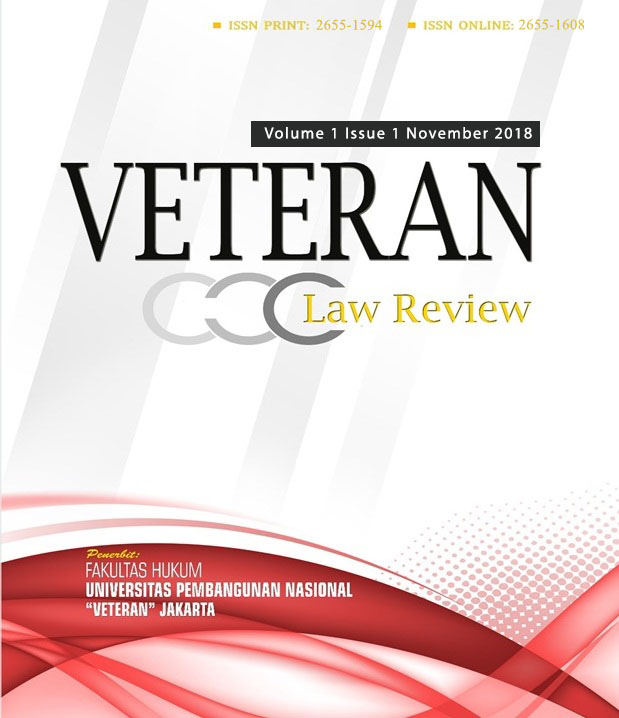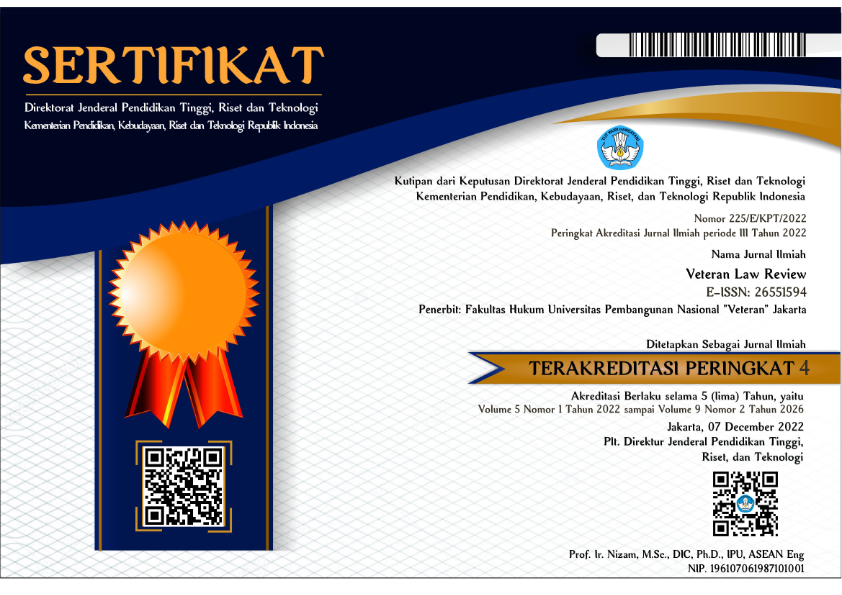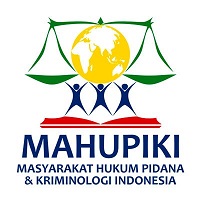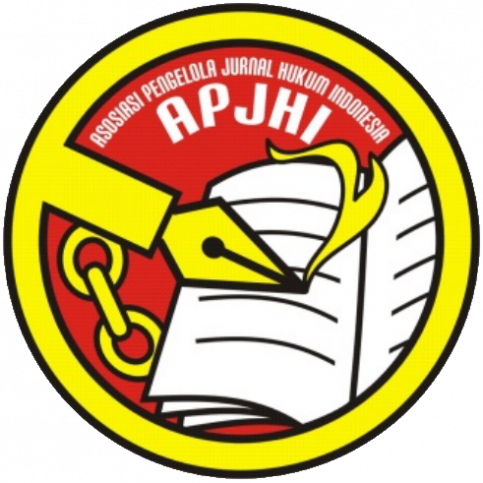Legal Implementation On Land Border Management Between Indonesia And Papua New Guinea According to Stephen B. Jones Theory
DOI:
https://doi.org/10.35586/velrev.v1i1.393Abstract
In the opinion of Stephen B. Jones the management of the border consists of (1) allocation, (2) delimitation, (3) the demarcation of boundaries in the field, and (4) boundary administration. The land border between Indonesia and Papua New Guinea has been arranged inside Memorandum of Understanding In Respect of The Land Boundary on The Island of Irian (New Guinea) and The Territorial Sea and Seabed Boundaries Immediately South of That Islands; Protocol about Report of Conference on Certain Seabed Boundaries Between Indonesia and Australia and Certain Seabed and Territorial Boundaries Between Indonesia and Papua New Guinea; Agreement between Indonesia and Australia concerning Certain Boundaries between Indonesia and Papua New Guinea; Memorandum of Understanding between The Government of The Republic of Indonesia and the Government of The Australia/Papua New Guinea concerning Administrative Border Arrangements; Agreement between the Government of Indonesia and the Government of Australia (Acting on Its own Behalf and on Behalf of the Government of Papua New Guinea) concerning Administrative Border Arrangements as to the Border between Papua New Guinea and Indonesia. This regulation is used as the basis for managing land borders between Indonesia and Papua New Guinea based on the opinion of Stephen B. Jones.Downloads
References
Adler, R. (2002) “Surveyors Role in Delineation and Demarcation of International Land Boundaries”. FIG XXII International Congress, Washington D.C. U.S.A: from http://www.fig.net/pub/fig_2002/Js20/JS20_adl er.pdf.
Akencia-Ospina, E. V. (2002). International Boundary Delimitation and Law of Treaties. Presented at workshop held at IBRU University of Durham. UK, 8-10 July 2002, unpublished.
Sayel, M. A., Lohmann, P., & Heipke. C. International Boundary Making – Three Case Studies. Leibniz Universität Hannover. Institute of Photogrammetry and GeoInformation (IPI). Hannover.
Anderson, M. (1996). Frontiers: Territory and State Formation in the Modern World. (Cambridge, UK: Polity Press). Introduction and Chapter 1.
Bangun, B. H.. (2013). Pemanfaatan Perjanjian Kerjasama Pengelolaan Perbatasan Negara Bagi Pemenuhan Hak Ekonomi Masyarakat (Studi Di Perbatasan Kalimantan Barat-Sarawak). Disertasi, Program Doktor Ilmu Hukum Fakultas Hukum Universitas Diponegoro, Semarang.
Brunet-Jailly, E. The State of Borders and Borderlands Studies 2009: A Historical View and a View from the Journal of Borderlands Studies, from http://srch.slav.hokudai.ac.jp/publictn/eurasia_border_review/no1/01_Brunet.pdf.
Buchanan, A., & Moore, M. (2003). States, Nations and Borders: The Ethics of Making Boundaries. Cambridge, UK: Cambridge University Press.
Fauzi, D. T.. Fenomena Masalah Lintas Batas Indonesia-Papua Nugini Dan Pengaruhnya Terhadap Hubungan Bilateral Indonesia-Papua Nugini. tesis, http;//repository.unpas.ac.id/id/eprint/571.
Guo, R. (2015). Cross Border Management : Theory, Method, and Application. Springer Berlin Heidelberg Dordrecht London.
Hanita, M. “Strategi Pertahanan di Wilayah Perbatasan, Studi di Tiga Wilayah Perbatasan : Papua, Timor, dan Kalimantan”. Jurnal Aplikasi Stratejik.
Husnadi. (2004). Menuju Model Pengembangan Kawasan Perbatasan Darat Antar Negara (Studi Kasus: Kecamatan Paloh dan Sajingan Besar Kabupaten Sambas, Kalimantan Barat). Tesis pada Program Studi Magister Teknik Pembangunan Wilayah dan Kota. Universitas Diponegoro, Semarang.
Laporan Akhir Kajian Manajemen Wilayah Perbatasan Negara. (2004). Pusat Kajian Administrasi Internasional. Lembaga Administrasi Negara.
Prescott, V., & Gillian D. T. International Frontiers and Boundaries (Law, Politics and Geography). oninklijke Brill NV, Leiden, The Netherlands. Koninklijke Brill NV incorporates the imprints Brill, Hotei Publishers, IDC Publishers. Martinus Nijhoff Publishers and VSP.
Purwanto, H., & Dewa G. S. M. Legal Instruments of The Republic of Indonesia In Border Management Using The Perspective of archipelagic state, International Journal of Business, Economics and Law, Vol. 11, Issue 4 (Dec.).
Soekanto, S., & Mamudji, S. (2003). Penelitian Hukum Normatif; Suatu Tinjauan Singkat. Jakarta: PT. Rajagrafindo Persada.
Soekanto, S. (2012). Pengantar Penelitian Hukum. Jakarta: Universitas Indonesia Press.
Sumaryo, J., Subaryono, S. S., & Wardaya, D. (2014). Geospatial Information and Regional Boundary Dispute in the Regional Boundary Demarcation during the Regional Autonomy Era in Indonesia. FIG Congress 2014 Engaging the Challenges - Enhancing the Relevance Kuala Lumpur, Malaysia 16 – 21 June 2014.
Sutisna, S., & Handoyo, S. Delineation And Demarcation Surveys Of The Land Border In Timor: Indonesian Perspective. Paper presented at “the International Symposium on Land and River Boundaries Demarcation and Maintenance in Support of Borderland Development”. Center for Boundary Mapping The National Agency for Surveys and Mapping of Indonesia (Bakosurtanal).
Sutisna, S. (2006). “Delineation and Demarcation Surveys of the land border in Timor, Indonesian Perspective”. Presented at International Symposium on Land and River Boundaries, Demarcation and Maintenance of Border Development, Bangkok 6-11 Nov 2006. International Border Research Unit (IBRU) University of Durham UK, unpublished.
Wuryandari, G., et al. (2009). Keamanan Di Perbatasan Indonesia – Timor Leste : Sumber Ancaman Dan Kebijakan Pengelolaannya. Yogyakarta: P2P-LIPI & Pustaka Pelajar.
Downloads
How to Cite
Issue
Section
License
Copyright (c) 2022 Veteran Law Review Journal
Veteran Law Review © 2022 by Faculty of Law Universitas Pembangunan Nasional "Veteran" Jakarta is licensed under Creative Commons Attribution 4.0 International

1. License
The non-commercial use of the article will be governed by the Creative Commons Attribution license as currently displayed on Creative Commons Attribution 4.0 International.
2. Author(s)' Warranties
The author warrants that the article is original, written by the stated author(s), has not been published before, contains no unlawful statements, does not infringe the rights of others, is subject to copyright that is vested exclusively in the author, and free of any third party rights, and that any necessary written permissions to quote from other sources have been obtained by the author(s).
3. User/Public Rights
VELREV's spirit is to disseminate articles published are as free as possible. Under the Creative Commons Attribution-ShareAlike 4.0 International License. VELREV permits users to copy, distribute, display, and perform the work for non-commercial purposes only. Users will also need to attribute authors and VELREV to distributing works in the journal and other media of publications.
4. Rights of Authors
Authors retain all their rights to the published works, such as (but not limited to) the following rights;
- Reproduce the work
- Prepare derivative works based upon the work
- Distribute copies of the work
- Perform the work publicly
- Display the work publicly
- Copyright and other proprietary rights relating to the article, such as patent rights,
- The right to self-archive the article,
- The right to enter into separate, additional contractual arrangements for the non-exclusive distribution of the article's published version (e.g., post it to an institutional repository or publish it in a book), with an acknowledgement of its initial publication in this journal (Veteran Law Review).
5. Co-Authorship
If the article was jointly prepared by more than one author, any author submitting the manuscript warrants that he/she has been authorized by all co-authors to be agreed on this copyright and license notice (agreement) on their behalf, and agrees to inform his/her co-authors of the terms of this policy. VELREV will not be held liable for anything that may arise due to the author's internal dispute. VELREV will only communicate with the corresponding author.
6. Royalties
Being an open accessed journal and disseminating articles for free under the Creative Commons license term mentioned, author(s) are aware that VELREV entitles the author(s) to no royalties or other fees.
7. Miscellaneous
VELREV will publish the article (or have it published) in the journal if the article’s editorial process is successfully completed. JOSI's editors may modify the article to a style of punctuation, spelling, capitalization, referencing, and usage that deems appropriate. The author acknowledges that the article may be published so that it will be publicly accessible and such access will be free of charge for the readers as mentioned in point 3.


















